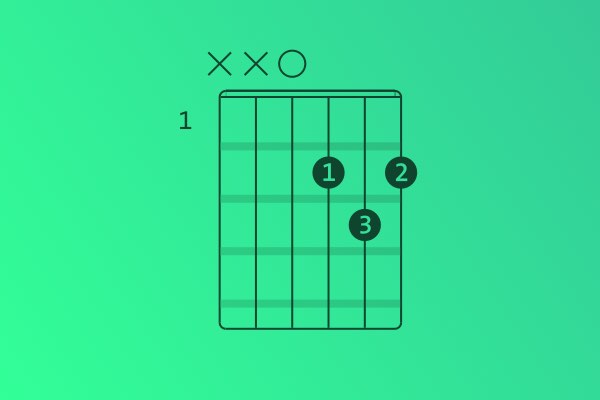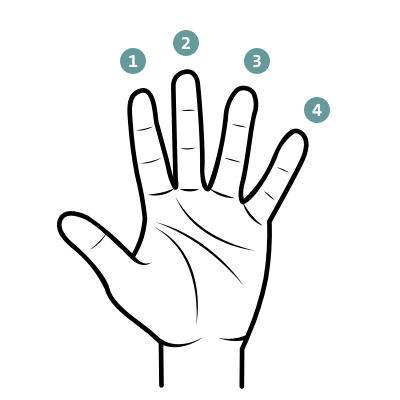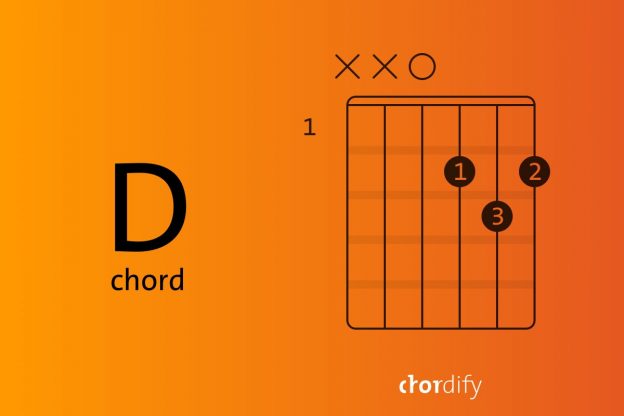Guess who’s back, back again? Yup, it’s us with another exciting episode of how to play a basic chord in three simple steps! Last time we taught you how to jam an A minor. This week’s focus is on learning you to play the D chord. Are you ready for this?
Learning to play the guitar could be painful. Especially when your fingers start to hurt due to pressing down the strings. Here are some tips to help you with blisters. After all, you know what they say… no pain no gain! Now back on topic. We already discussed the E, the Em, A and Am in previous posts. Pick up your guitar and prepare for the next stop: D major.
Step 1 – Tune your guitar
Can you guess what the first step is? Yes, it is most definitely tuning your guitar. Both pros and beginners can’t do without a well tuned instrument. For a standard tuning you can use a tuner, or an application for your phone like KARANG.
Step 2 – Take a closer look at the D
The second step is to visualize the chord you’re about to learn. Don’t worry, you don’t have to invent the wheel. We have a chord diagram for that. Check it out below. On this picture you see a part of the guitar neck. The vertical lines from left to right are the strings E, A, D, G, B, e (strings are counted from bottom to top, so the high e is the first string and the low E the sixth).
You can also see transparent circles at the top. These indicate which strings you need to play open. The number 1 indicates on which fret the chord is located, after all it’s always good to know where to work on the guitar neck. In this case the D is located at the top of the guitar neck.

Step 3 – Position your fingers
The position of your fingers is shown by the numbers in the thick black circles. To make it easier we made a picture: 1 indicates your index finger, 2 your middle finger, 3 your ring finger, and 4 your little finger. Well, there’s nothing to it now is it? Are you ready for some action time?
Okay, now take another look at the chord diagram of D. As you can see, you have to position your index finger on the second fret of the third string (the G string). Your middle finger goes on the second fret of the first string (the E string). To complete the D chord you’ll have to place our ring finger on the third fret of the second string (the B string).
Do you have all the fingers in position? Yeah? Great! Now give all the strings a good ring starting from the D string down. Sounds cheerful doesn’t it? Yup, you just added the D Major to your basic skills toolbox.

Step 4 (bonus) – Why do we play a D as we do?
Are you happy? You should be! The D is a wonderful chord to strum, ring and jam on. Now the big question is: what are you going to do next? If you can’t wait another minute to start jamming to songs in D click here. On the other hand, you could also read on to understand why a D chord is played the way you just learned according to the music theory. No matter what you choose, it’s all good.
Aha, a real die hard! You haven’t dropped out yet. Good for you. Buckle up, because here comes the theory hurricane. Each basic chord we discuss consists of a number of basic elements: the root, the third note (third), the fifth note (fifth) and the eighth note (octave).
The octave and the root are the same tone, only they differ in height. The fifth provides the power in the triad by supporting it harmonically. The third indicates whether a chord is major or minor. This says something about the mood in which the chord is — major often sounds cheerful and minor sounds a little less happy.
Step 5 (bonus) – The scale of D
Why do we give the tones within a chord such strange numbers? Well, that’s because these tones come from the scale of the relevant key. For example, the scale of the D is made up of D (1), E (2), F# (3), G (4), A (5), B (6), C# (7) and D (8). Note the numbers behind the tones. The 1 is the root, the 3 is the third, the 5 is your fifth and the 8 is the root played higher, which we also call — as already explained — the octave.
Now take another look at the D chord diagram. Which tones do you actually use from the scale? You strum an D, an A, a D and a F# — so root, fifth, octave and third. Makes sense, right? For more complex chord constructions see this blog post. Do you find this theory section hard to wrap your head around? Don’t worry about that. Here are some tracks in D to go crazy on. Happy jamming!
Did you enjoy this article? Stay tuned because next week we’re publishing “How to play an E chord in three simple steps“.


